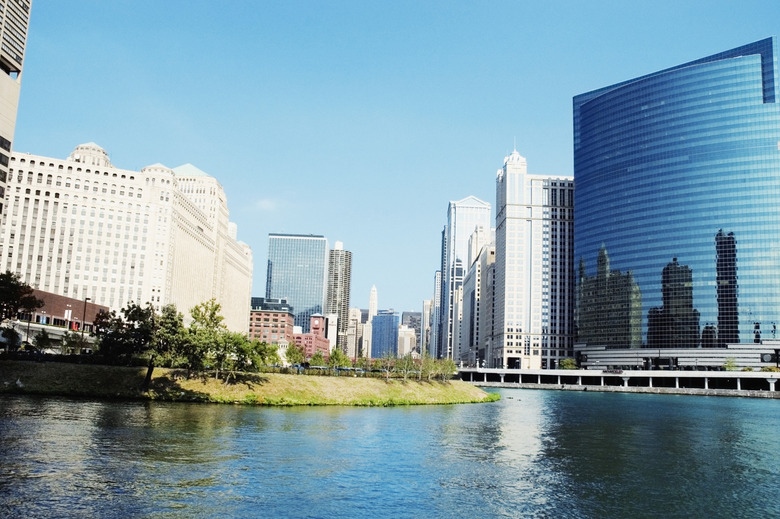Landforms Near Chicago
Between 25,000 and 14,000 years ago, the area that now surrounds Chicago was covered in glaciers. Between 14,000 and 10,000 years ago, those glaciers made a slow retreat to the north. Today, the shape of the land near the southernmost end of Lake Michigan – where Chicago was eventually established and built – is largely a result of that glacial retreat.
Plains and Moraines
Plains and Moraines
Chicago and its surrounding area include Cook, Dupage and Will counties in Illinois. These are political boundaries, however; arbitrary divisions superimposed on the landforms – or topography – that predate them. Those landforms include Lake Michigan, the Chicago Plain, the Valparaiso Moraine and the Desplaines Valley. High bedrock under the retreating glaciers left the most prominent feature in the area, the Blue Island Ridge in South Chicago, a 6-mile-by-1-mile table of land that sits 25 to 50 feet above the adjacent flatland.
Chicago Plain
Chicago Plain
Chicago is built atop the Chicago Plain, a flat crescent at the southern head of Lake Michigan averaging 60 feet above the surface level of the lake. The Chicago Plain bevels down into Lake Michigan along the western and southern edge of the lake's head. At the northern end of the Chicago Plain is the city of Winnetka, 8 miles outside Chicago. Most of the remaining crescent is now occupied by the city of Chicago itself.
Valparaiso Moraine
Valparaiso Moraine
A moraine is a region of glacial rubble, or glacial "till." Now covered in layers of accumulated topsoil, the Valparaiso Moraine is actually a field of great stones left behind by the glacial retreat, creating a gently undulating topography which envelops the Chicago Plain and presses the plain against the shores of Lake Michigan. The Valparaiso Moraine is a belt approximately 15 miles wide and stretches from western Cook County all the way to Valparaiso, Indiana.
Desplaines Valley
Desplaines Valley
Cutting through the center of the morainal belt from southwest to northeast is the Desplaines River and the Despalines River Valley. From 1/2 to 1 1/4 miles wide, the Desplaines Valley has steep sides and a flat base, with sides that range from 30 to 150 feet high along the varying elevations of the surrounding moraine. The Desplaines Valley averages around 15 feet above the level of Lake Michigan, with a drop so shallow that one section is referred to as the "12-mile level," an area stretching between the towns of Summit and Lemont. Tributaries from the valley are created by draws in the moraine, which have created numerous marshes along the length of the valley.
Cite This Article
MLA
Goff, Stanley. "Landforms Near Chicago" sciencing.com, https://www.sciencing.com/landforms-near-chicago-8001766/. 24 April 2017.
APA
Goff, Stanley. (2017, April 24). Landforms Near Chicago. sciencing.com. Retrieved from https://www.sciencing.com/landforms-near-chicago-8001766/
Chicago
Goff, Stanley. Landforms Near Chicago last modified August 30, 2022. https://www.sciencing.com/landforms-near-chicago-8001766/
